Original town site of Grand Falls (1906 - 1909)
Grand Falls
NL
Award Category:
Prix du XXe Siècle
Anglo-Newfoundland Development Co.

Text by Dr. Dustin Valen, BEDS, MArch, PhD, Prix du XXe siècle expert panel member
Grand Falls is remarkable for being among the first—possibly the first—garden cities created outside the United Kingdom at the beginning of the twentieth century. Designed and built by members of the Anglo-Newfoundland Development Co. between 1906 and 1909, the town has a layout inspired by Ebenezer Howard’s pioneering theory of 1898, with separate residential, commercial, and industrial zones, and suburban housing lots organized along a series of sweeping curvilinear streets meant to integrate scenic views and landscape into the urban experience. Spearheaded by brothers Alfred and Harold Harmsworth, owners of a UK-based publishing empire, Grand Falls is a spectacular example of how industrial development and emergent planning theories guided the creation of paternalistic Canadian resource towns in the early decades of the twentieth century, when industrial entrepreneurs seized upon planning as a way to forge a stable and passive workforce by protecting workers’ health and enforcing social standards.
The city’s progressive appearance and factory wages made it the envy of people across Newfoundland. The AND Co.’s state-of-the-art pulp and paper mill was among the first land-based industries to develop in Newfoundland following the completion of an inland railway in 1898. The company also built shops, clubs, churches, schools, and a hospital for its workers, along with an abundance of greenery in the form of athletic fields, parks, and gardens. Company housing in Grand Falls was modelled on that in Letchworth Garden City (the world’s first garden city, built 1903-05), where the Harmsworth’s Daily Mail sponsored a Cheap Cottage Exhibition that challenged British architects to create low-cost workers’ housing using industrially produced materials and based on the latest sanitary science. Similarly, workers’ housing in Grand Falls was arranged along wide streets with front and rear gardens and featured modern amenities, like indoor plumbing and electricity. The company also directed all aspects of social life in Grand Falls, sponsoring picnics and sports teams and banishing alcohol.
In addition to many surviving examples of the townsite’s original housing stock, several heritage structures remain in place, including Grand Falls House (a Tudor Revival residence built for Alfred Harmsworth in 1909), the Grand Falls Post Office (completed in 1913), portions of the original AND Co. Pulp and Paper Mill (completed in 1909 and permanently closed in 2009).
Click for full version:





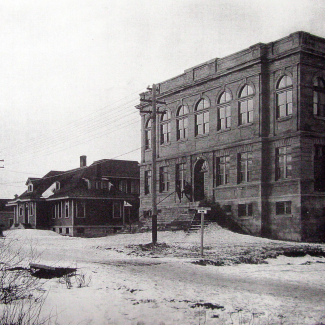
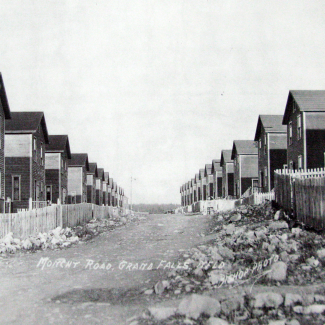
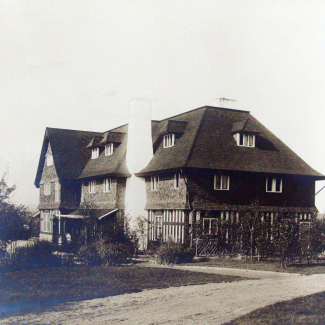
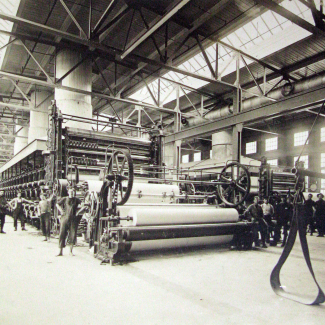
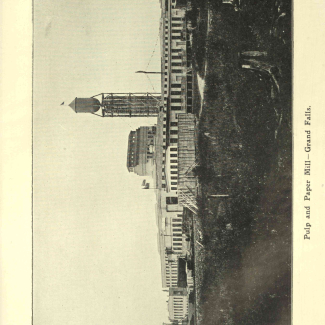
Dr. Inderbir Singh Riar, BA, M.Arch, PhD: The visionary British planner and reformer Ebenezer Howard’s influential Garden City proposal for self-contained settlements, first outlined in 1898, arrived in less than a decade to Grand Falls, Newfoundland. Grand Falls, like earlier paternalist-capitalist efforts such as Lever Brothers’ Port Sunlight outside Liverpool and the Cadbury family’s Bourneville near Birmingham, took salubrious housing as means to improve workers’ lives and morals. The consequent company town, predicated on functional zoning and picturesque residential districts, sought the modernization of every aspect of life, from industrial production and social responsibility to cultural life and familial duty. The result deserves recognition not only as a model for much later efforts such as Alcan’s Kitimat in British Columbia, but as an expression of how yearnings for the simultaneous reform of industry and society fuelled the resource economy across the Americas.
Dr. Dustin Valen, BEDS, MArch, PhD: Grand Falls is a stunning example of how transnationalism shaped Canadian cities and the experience of industrial labourers at the beginning of the twentieth century. Equally stunning is how little is known about this company town today, despite the many other celebrated examples of Garden City planning across this country. The project’s imagined role in striking a harmonious relationship between industry and labour while bettering the circumstances of workers is a timely reminder of how twentieth-century planning reforms allowed for degrees of social control through means virtually synonymous at the time with industrial and social modernity.
2025 Expert Panel